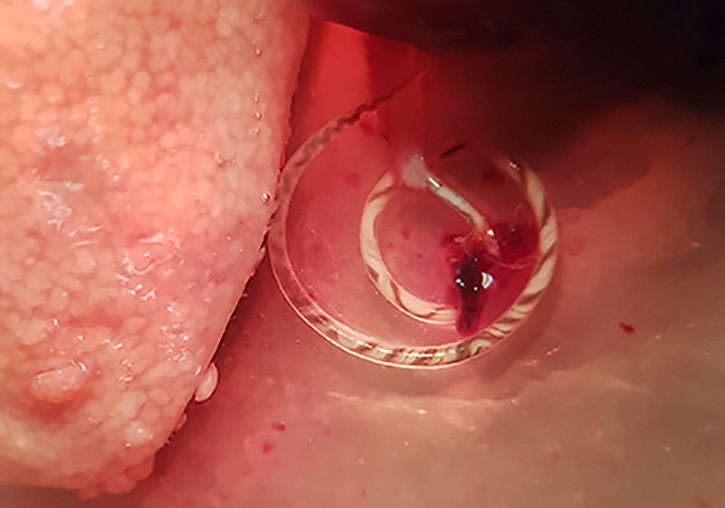The parasite that is the most frequent cause of a type of meningitis, found for the first time in rats from continental Europe
- Scientific Culture and Innovation Unit
- December 16th, 2022

A research conducted by the Parasites and Health group of the University of Valencia has found for the first time in continental Europe the nematode worm) Angiostrongylus cantonensis, a zoonotic (capable of being transmitted to humans) parasite present in the pulmonary arteries of rats and that it is the most common causative agent in humans of eosinophilic meningitis (EM). This disease causes inflammation of the membrane that covers the brain and can cause seizures, brain damage and visual disturbances, among other symptoms.
The work, directed by the full professor María Teresa Galán Puchades and in which the Laboratory of Biochemical and Molecular Parasitology of the Institute of Biotechnology of the University of Granada also participates, has been published in the journal Emerging Infectious Diseases and has located the parasite in two species of rats from the city of Valencia.
“To date, the nematode had only been detected at the island level in Europe (in rats from Tenerife and in sea urchins from Mallorca). Both globalisation and climate change are favouring the expansion of this zoonotic parasite of Asian origin”, highlights Galán Puchades, who adds that the discovery of the worm occurs both in urban and peri-urban areas (orchard areas). It is the first time that zoonotic parasites have been studied in rats from the city of Valencia.
The Parasites and Health research group, from the Department of Pharmacy and Pharmaceutical Technology, and Parasitology of the Faculty of Pharmacy, is working in collaboration with the Health Service of the Valencia City Council and the company Laboratorios Lokímica – responsible for pest control –, in a parasitological study of rodents in Valencia. The discovery of the nematode, with important repercussions for Public Health, has occurred both in sewer rats (Rattus norvegicus) and in the black rat (Rattus rattus).
Zoonotic transmission of Angiostrongylus cantonensis to humans is alimentary by ingestion, both of raw or undercooked parasitised snails, and of vegetables eaten raw in salads (lettuce, cabbage, or radishes) contaminated with snail slime with the infective larva.
To date, EM human cases detected in Europe are imported from endemic countries. With this finding, in addition to taking the appropriate prophylactic measures to avoid infection, A. cantonensis must be included in the differential diagnosis in patients with clinical symptoms compatible with parasitic infection, such as severe headache, stiff neck, nausea, vomiting, paresthesia, and/or or eosinophilic encephalitis, with or without a history of travel to other endemic countries.
The results of this research have been sent to the Health Department of the Valencian Government. In addition, the Valencia City Council and the University of Valencia have established a collaboration agreement on this matter within the framework of the One Health concept, to study rat parasites with the potential for zoonotic transmission and the future possibility of determining resistance to the rodenticides used in the two types of rats in which the nematode has been found.
On behalf of the University of Valencia, María Teresa Galán Puchades, Sandra Sáez Durán, Rubén Bueno Marí and Màrius V. Fuentes have also participated in this research.
Article:
Galán-Puchades M., Gómez-Samblás M., Osuna A., et al. Autochthonous Angiostrongylus cantonensis Lungworms in Urban Rats, Valencia, Spain, 2021. Emerging Infectious Diseases. 2022;28(12):2564-2567. doi:10.3201/eid2812.220418
Article link: https://wwwnc.cdc.gov/eid/article/28/12/22-0418_article
















